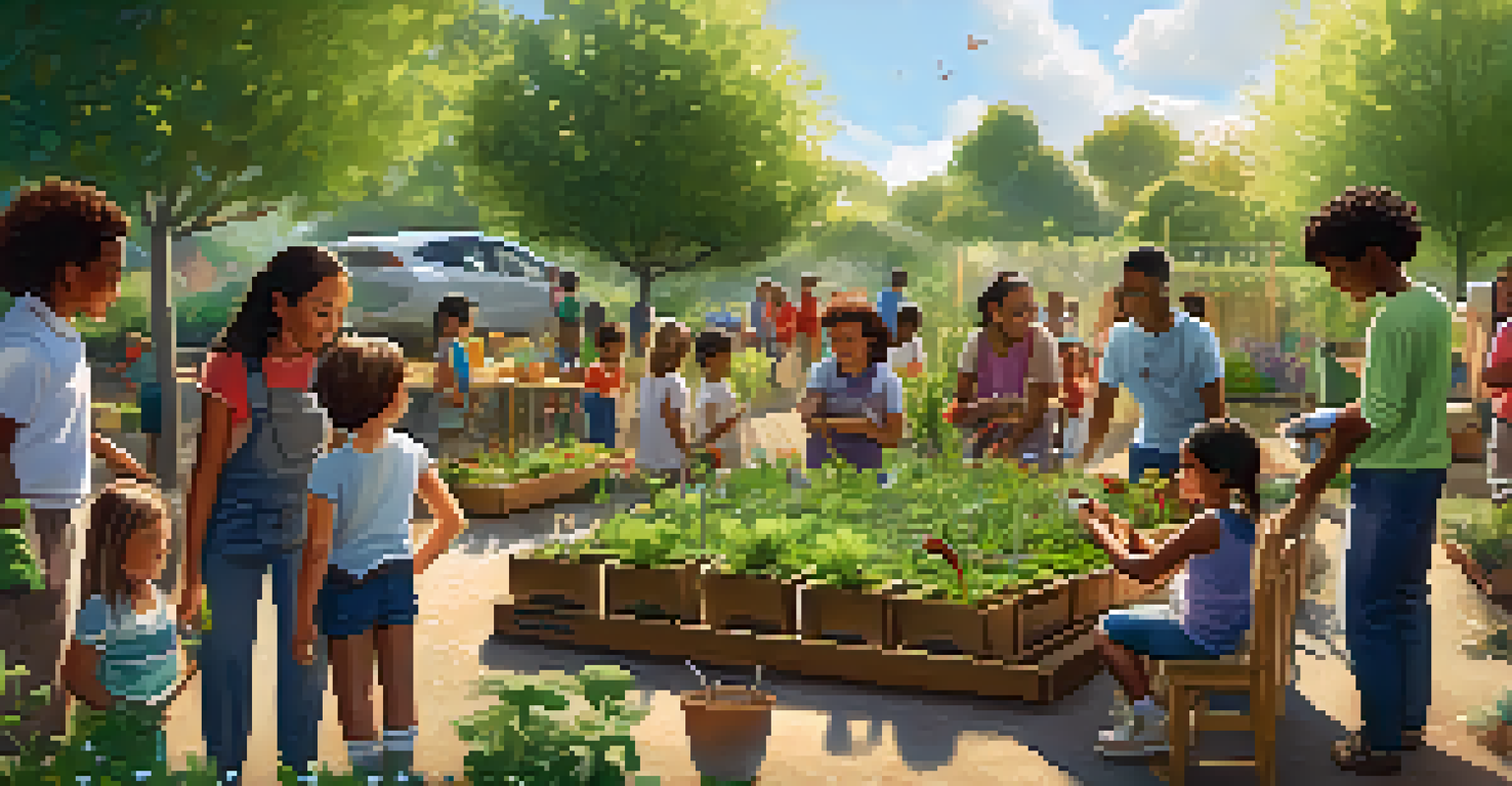Community Gardening: A Solution for Food Insecurity Issues

Understanding Food Insecurity and Its Impact
Food insecurity affects millions, limiting access to nutritious food. It often stems from economic challenges, lack of transportation, or insufficient grocery stores in certain neighborhoods. This issue not only impacts physical health but also emotional well-being, leading to stress and anxiety.
The greatest threat to our planet is the belief that someone else will save it.
In many communities, families struggle to put healthy meals on the table, relying on fast food or processed options that are unhealthy and unsustainable. With rising costs of living and stagnant wages, the need for practical solutions becomes urgent. Addressing food insecurity requires innovative approaches that empower communities.
One such approach is community gardening, which fosters collaboration and provides direct access to fresh produce. By bringing people together to cultivate their food, communities can tackle the challenge of food insecurity head-on while also building social connections.
The Benefits of Community Gardening
Community gardens offer a variety of benefits, both tangible and intangible. They provide fresh fruits and vegetables, which can significantly improve diet quality for participants. This access to healthy food is crucial in combating the effects of food insecurity.

Moreover, these gardens serve as a space for learning and sharing agricultural knowledge, helping individuals acquire skills in gardening and nutrition. Participants often report increased confidence and a sense of ownership over their food sources, which can lead to healthier choices.
Food Insecurity Affects Communities
Food insecurity limits access to nutritious food, impacting both physical health and emotional well-being.
Additionally, community gardens foster social interaction and strengthen community ties. Neighbors work together, share resources, and celebrate their harvests, creating a sense of belonging and support. This social aspect is just as important as the food produced.
How to Start a Community Garden
Starting a community garden may seem daunting, but it can be broken down into manageable steps. First, gather interested individuals who share a passion for gardening and improving food access. This can be done through community meetings or social media outreach.
We do not inherit the earth from our ancestors; we borrow it from our children.
Next, identify a suitable location for the garden. This could be an empty lot, a park, or even a shared backyard. Once the site is secured, it's important to assess soil quality and ensure it is safe for growing food. Local gardening experts can provide valuable advice during this phase.
Finally, develop a plan that outlines the garden's structure, rules, and maintenance. Establishing a schedule for planting, watering, and harvesting will help keep everyone engaged and accountable. With a clear plan in place, the garden can flourish and become a community asset.
Engaging the Community in the Garden
Engagement is key to a successful community garden. Hosting events like planting days, workshops, or harvest festivals can draw in participants and create enthusiasm. These activities not only promote gardening skills but also enhance community spirit.
Involving local schools and youth organizations can further enrich the experience. Children can learn about where their food comes from and develop a greater appreciation for healthy eating. This hands-on approach helps instill lifelong habits that benefit both individuals and the community.
Community Gardening Empowers Neighbors
Community gardens provide fresh produce, enhance gardening skills, and foster social connections among participants.
Additionally, collaboration with local businesses can provide resources and support. Whether through donations, sponsorships, or volunteer hours, these partnerships can elevate the garden's impact and sustainability. A well-connected garden can become a hub of activity and pride for the neighborhood.
Sustaining the Community Garden Long-Term
Sustainability is crucial for the longevity of a community garden. This can be achieved through regular meetings to discuss progress, challenges, and future plans. Keeping everyone informed and involved ensures that the garden remains a priority for the community.
Implementing a membership or donation system can help fund ongoing maintenance and improvements. Contributions from participants can be used for seeds, tools, or even educational programs. This financial support fosters a sense of ownership and accountability.
Additionally, documenting the garden's journey through photos and stories can inspire continued engagement. Sharing successes and challenges with the broader community can attract new members and supporters, ensuring the garden thrives for years to come.
The Role of Local Governments and Organizations
Local governments and organizations play a vital role in supporting community gardens. They can provide resources, funding, and guidance to help establish and maintain these spaces. By recognizing the importance of food security, they can prioritize community gardening initiatives.
Policies that promote urban agriculture can make a significant difference. Zoning regulations can be adjusted to allow for more community gardens, and grants can be made available for those looking to start one. This type of support can empower communities to take charge of their food sources.
Sustainability Ensures Garden Longevity
Regular engagement and funding mechanisms are crucial for maintaining the long-term success of community gardens.
Moreover, collaboration between government entities and local nonprofits can enhance the garden's reach and effectiveness. Working together, they can address food insecurity on a larger scale, creating a network of gardens that benefit multiple communities.
Success Stories from Community Gardens
Across the country, many community gardens have made a significant impact in their neighborhoods. For example, in Detroit, the Urban Farming Initiative has transformed vacant lots into flourishing gardens that provide fresh produce to residents. This initiative not only addresses food insecurity but also revitalizes the area.
Another inspiring story comes from a community garden in New York City, where local residents have banded together to create a green oasis in an urban environment. This garden not only supplies fresh vegetables but also serves as a gathering place for cultural events and educational workshops.

These success stories illustrate the transformative power of community gardening. They show how local efforts can lead to lasting change, inspiring others to take action in their own communities and combat food insecurity together.